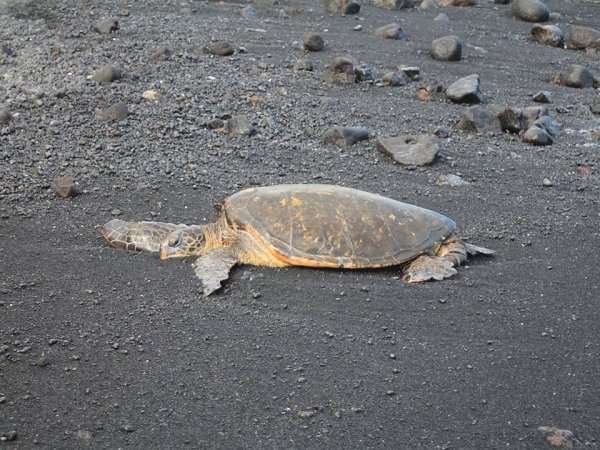Feeding by humans alters behavior and physiology of green turtles in the Canary Islands

Feeding animals is altering the behaviour and eating habits of the green turtle in the Canary Islands (Spain). This is the conclusion of a study published in the journal Science of the Total Environment carried out by a team from the Biodiversity Research Institute of the University of Barcelona (IRBio).
The archipelago of the Canary Islands is the northernmost habitat of the green turtle (Chelonia mydas) in the western Atlantic. This marine turtle, the biggest species of the family of Cheloniidae and the only herbivorous one, is included in the red list of endangered species according to the International Union for Conservation of Nature (IUCN). Living in the seagrass Cymodocea nodosa, it appears occasionally in the western Mediterranean, and has a resident population in the eastern area, isolated from Atlantic populations.
Wild animals attract tourists, which creates important economic benefits. The irresponsible practice of feeding wild animals is spreading worldwide, and affecting several marine species, including the sand tiger shark (Carcharias taurus) and the whale shark (Rhincodon typus). The authors of this new study warn that feeding is a new threat for the green turtle, a species which has been historically threatened by hunting, and recently, by accidental fishing, sea transit and marine debris.
High consumption of fat, pollutants and behaviour changes
"Offering food to green turtles to get their attention is a practice spreading in the Caribbean and is now common in the Canary Islands," says LluÃs Cardona, lecturer from the Department of Evolutionary Biology, Ecology and Environmental Sciences of the UB and member of the Research Group on Large Marine Vertebrates of the University of Barcelona.
"Supplemental feeding has three consequences," he continues. "First, it slows down the adoption of an herbivorous diet, and it increases levels of triglycerides and other blood markers related to the high consumption of proteins and fat. Secondly, it also increases the levels of certain organic and inorganic pollutants. And last, getting them used to human contact makes them more vulnerable to crash into boats and to get captured by fishing gear with hooks, since turtles are attracted by bait."
In the study, the experts applied a wide experimental protocol that includes genetic, biochemical, toxicological analyses as well as analyses of stable isotopes, and photo identification and satellite ranging to monitor the population of turtles.
More information: Catalina Monzón-Argüello et al. Supplemental feeding and other anthropogenic threats to green turtles ( Chelonia mydas ) in the Canary Islands, Science of The Total Environment (2017).
Journal information: Science of the Total Environment
Provided by University of Barcelona




















